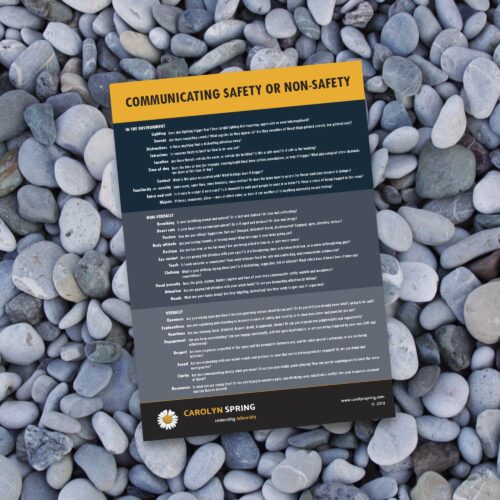The key to trauma healing is safety, and in the therapeutic setting it is absolutely essential that the therapist is aware of how to communicate safety by how they are in the room with their client – not just through what they say.
This poster, taken from Webinar #2: ‘Working with trauma that has become stuck‘, provides a checklist of things to consider in how to help clients’ develop accurate neuroception (the sense of feeling safe in our body).
This is a free downloadable PDF.
Page 1 is a full-colour poster.
Page 2 is a low-ink, print-friendly version.
After trauma, the survivor’s nervous system is set to be alert to danger and threat rather than safety. This is often heightened in the therapy room, which, based on past experiences of relational trauma, can trigger an expectation of further harm. How does the helping professional therefore communicate safety through their therapeutic presence?
This poster is based on a fuller discussion in Webinar #2: ‘Working with trauma that has become stuck‘ (because stuckness is often caused by the inability to feel safe). It provides a kind of checklist of things to consider, for example:
- What sources of threat are there in the environment?
- lighting
- sounds
- distractions
- intrusions
- location
- time of day
- context
- familiarity -v- novelty
- entry and exit
- objects
- What sources of threat are there non-verbally?
- breathing
- heart rate
- posture
- body attitude
- position
- eye contact
- touch
- clothing
- vocal prosody
- attention
- hands
- What sources of threat are there verbally?
- opennness
- explanations
- reactions
- engagement
- respect
- sound
- clarity
- resonance
